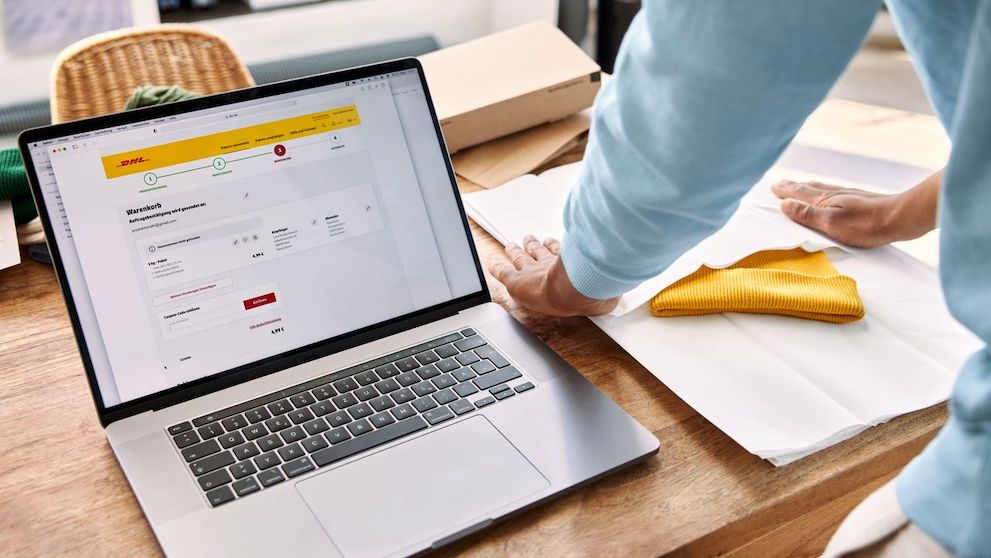Have you thought about building a mobile app for your e-commerce business? From engaging customers to increasing conversions, there are plenty of reasons to invest. Read on for some tips and tricks to ensure your customers have the most optimized shopping experience.
It’s no secret that mobile commerce is big business. If you own an e-commerce business, you’ve hopefully already ensured your website is optimized for those visiting from a smartphone (think larger font size, less white space etc.), but even better is to build a dedicated mobile app.
When you consider that global consumers are now spending an average of 4.2 hours per day using smartphone apps1, it makes perfect sense to invest in this sales channel. You can deliver customers a better customer experience which in turn leads to higher sales conversions.
Need more persuading? Let’s take a closer look at the benefits of mobile e-commerce apps…
Quick access
Unlike websites, which require users to open a browser on their smartphones and then search, a mobile app can be accessed with just a single click. And once downloaded, the app will sit on the user’s home screen, meaning they’ll be reminded of your brand every time they’re scrolling through their phones.
Happier customers…
Ultimately, online shoppers are looking for an easy, frictionless experience, and mobile apps offer just that – from fast loading speed to storing customers’ details for swift checkout.
…means more sales
Conversion rates through mobile apps are 130% higher compared to mobile-first websites2. Yep, read that again. Great mobile apps are designed with the UX at the heart of everything, which incentivizes shoppers to browse for longer and add more to their carts.
Competitive advantage
E-commerce is fiercely competitive. Whatever you’re selling, chances are there are hundreds of other brands offering the same. Investing in a great mobile app might just make the consumer lean towards you.
Availability
With mobile apps, some features can still be accessible offline. Your customers can browse and add products to their carts even when they don’t have access to the internet.
Push notifications
This is a big one for customer engagement. In general, mobile apps tend to have low retention rates – according to Statista data, in 2019, 25% of mobile apps downloaded by users worldwide were used only once3 – so push notifications are a great way to remind customers that you’re there.
A push notification is a message that pops up on a mobile device. If a user has downloaded your mobile app, you’ll essentially have a direct way to communicate with them at any time – customers don’t need to be using the app to receive a push notification. You can share discount codes, alert them to flash sales and new products – essentially anything that will drive them to open the app and shop. Best of all, push notifications have a click rate 7x higher than email marketing4.
Data
The holy grail for any business, mobile apps will give you plenty of rich customer data, including how your customers like to shop, what products are in demand, and where your weaknesses are – all of which can help you make improvements to your service.
So, there you have it – plenty of lucrative benefits to adding a dedicated mobile app to your e-commerce sales strategy. Wondering where to begin? Read on.
TOP TIPS FOR BUILDING A MOBILE APP
Decide your budget
Unfortunately, there’s no escaping the fact that mobile apps are expensive to develop. If you own a SMB with a limited budget, it’s best to initially focus on building the app for either Android or iOS. Market research will help you identify where the majority of your customers are present, and you can start there. Of course, if budget is no issue, developing your app on both platforms means you can reach more customers.
Quick login
Once a customer has downloaded your app, you don’t want to put them off by asking them for lots of details to register. Let them sign in with Facebook, Gmail or by creating an account that requires minimal steps. You can always ask for more details later, but at this point you want to get them from download to browsing your products as quickly as possible.
Functionality: keep it simple
Customers download mobile commerce apps for convenience and easy browsing so ensure your app’s user interface meets those needs:
- Clear layout with intuitive navigation: customers don’t want to have to scroll too much on a mobile app to find what they’re looking for
- “Thumb friendly” navigational design: important links such as “add to cart” and “proceed to checkout” should always sit where it’s easy for browsers to click
- Menu bar shown clearly on each page leading to well-designed product pages
- Visual consistency across buttons, fonts and color schemes
- Save users’ details to minimize how many fiddly fields they have to fill in
Make it personal
Customers want a personalized shopping experience. Start with a home screen that welcomes them by name. Mobile analytics will tell you each customer’s buying behaviors from which you can create and send out personalized product recommendation lists. You can also use this data to build customized email marketing campaigns.
Embrace push notifications but tread carefully
We’ve touched on the benefits of push notifications but beware of overdoing them. Send too many and customers will get annoyed and, in worst-case scenarios, delete your app.
You should send only the most relevant notifications to customers. Split up your app’s users into categories based on their interests, buying behaviors and product preferences, and then create personalized push notifications for each specific group.
Test, test and test
When developing a new app, you should be continually testing to optimize the user experience.
You may want to consider employing the services of an outside company – such as Apptimize5. Its mobile technology is the most-used mobile A/B testing and feature release management solution, helping you test every page of your mobile app to deliver customers the most optimized experience, whilst minimizing developer resources.
Invite customer feedback too. They’ll have experiences of shopping on your app that software just won’t be able to measure.
Ensure fast checkout
You’ve got the customer as far as checkout, now’s the time to make it as swift and easy as possible. Your mobile app should save customers’ billing and shipping details so that they don’t have to re-enter every time they buy from you, and be sure to integrate digital wallets so that they can pay with a couple of clicks. As a final touch, be sure to send your customers tracking notifications of their delivery status.
1 - Tech Crunch, April 2021
2 - Business of Apps, March 2021
3 - Statista, published July 2021
4 - Ad Leaks, July 2021
5 - Apptimize





















































